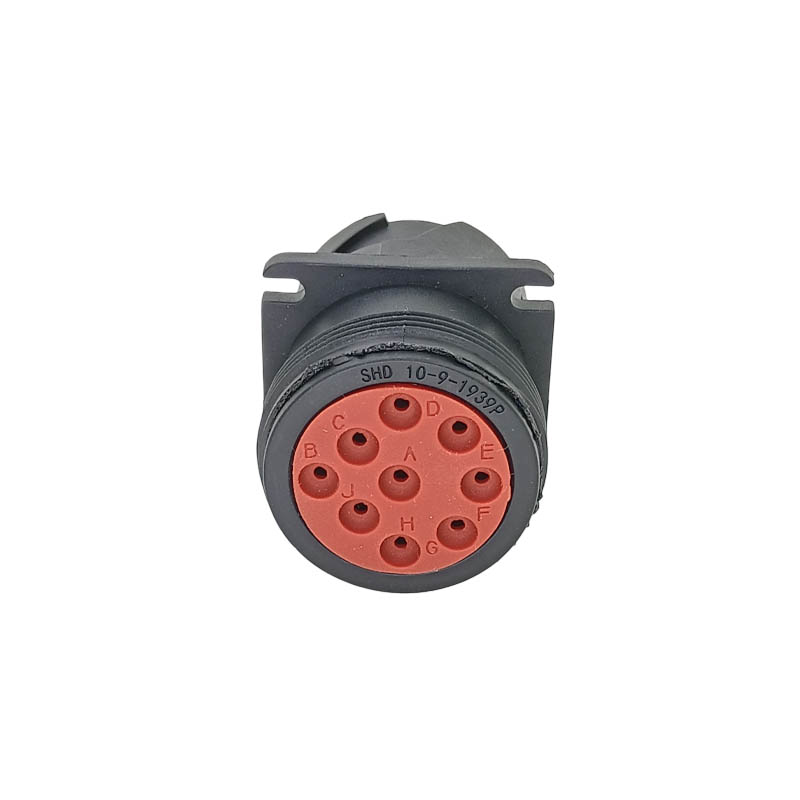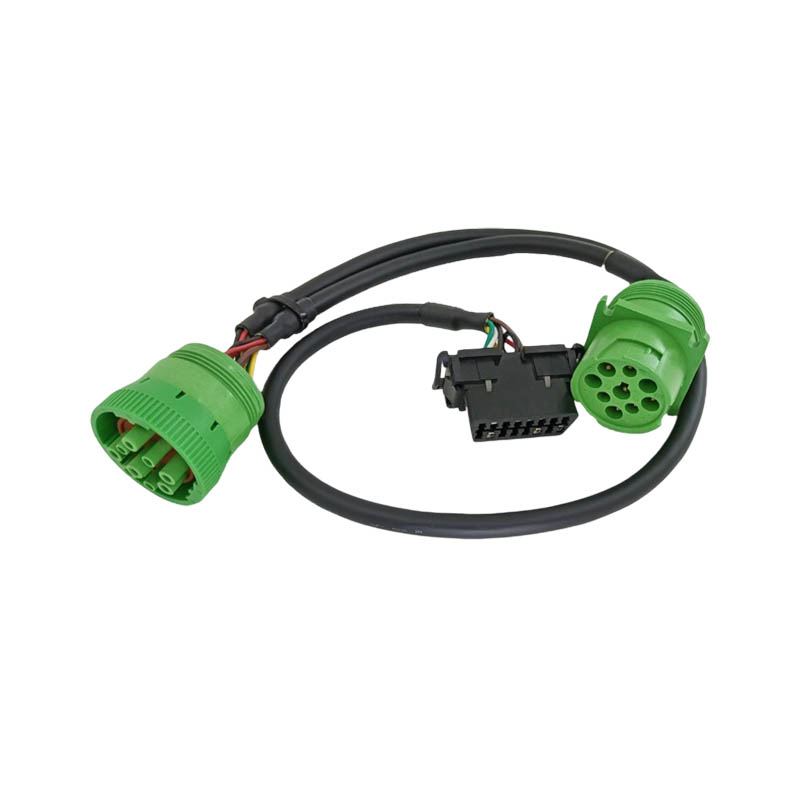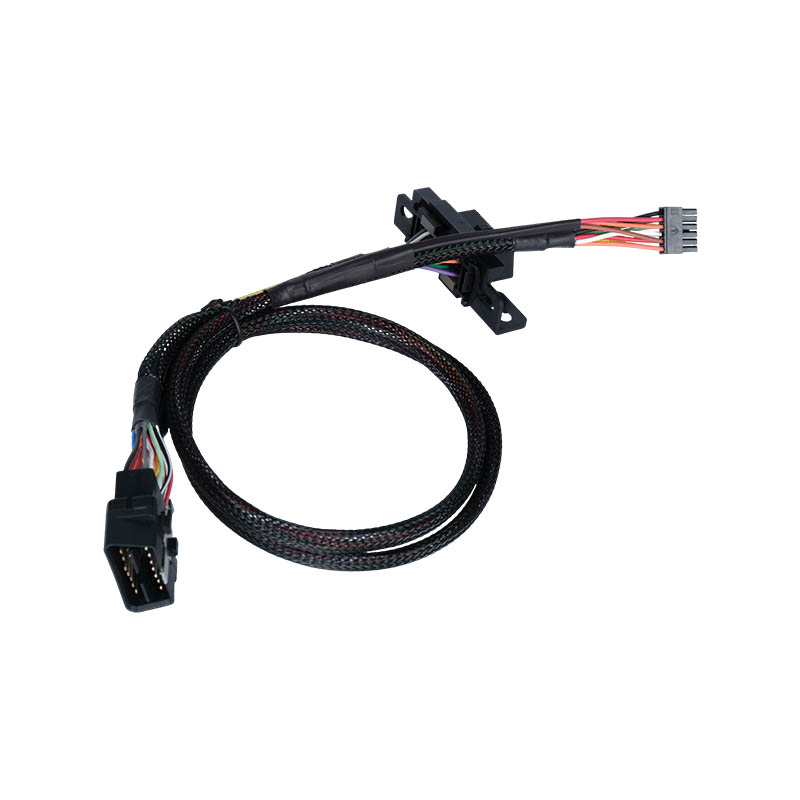Does an RF pigtail cable guarantee low-loss transmission of high-frequency signals?
Release Time : 2025-11-04
In modern high-frequency communication, radar detection, 5G base stations, and precision test and measurement systems, signal integrity directly determines the performance limits of the entire device. If a weak radio frequency signal suffers excessive attenuation, reflection, or interference during transmission, it can lead to increased bit error rate, decreased sensitivity, or even system failure. As the "nerve ending" connecting the RF module and antenna, and the instrument and the device under test, does an RF pigtail cable guarantee low-loss transmission of high-frequency signals? The answer is not only yes, but also stems from its precise control over the entire chain, from material selection and structural design to manufacturing processes.
An RF pigtail cable is essentially a highly optimized coaxial transmission line. Its core objective is to efficiently transmit electromagnetic waves from one end to the other with minimal energy loss within a specific frequency range. To achieve this goal, its internal structure is meticulously designed: the center conductor is typically made of high-purity copper or silver-plated copper to minimize ohmic losses due to conductor resistance; the outer shielding consists of a multi-layered braided mesh or foil-braided composite structure, ensuring both flexibility and excellent electromagnetic shielding effectiveness to prevent external interference or internal signal leakage.
The choice of dielectric material is particularly critical. Traditional coaxial cables may use ordinary polyethylene, but at high frequencies, its molecular polarization absorbs a large amount of electromagnetic energy, converting it into heat and causing significant losses. High-quality RF pigtails generally use foamed polytetrafluoroethylene (PTFE) or microporous dielectrics. These materials not only have low dielectric constants and small loss tangents, but also allow for further reduction of dielectric losses during signal propagation by controlling the foaming density. Simultaneously, stable dielectric properties ensure consistent characteristic impedance across the entire frequency band, reducing signal reflections caused by impedance mismatch.
Structural consistency is another cornerstone of low loss. During the manufacturing process, the concentricity of the center conductor, the uniformity of the dielectric layer, and the coverage of the shielding layer must be strictly controlled. Even the slightest eccentricity or thickness fluctuation can cause abrupt changes in local impedance, creating an "invisible barrier" that scatters high-frequency signals and generates standing waves. High-end products utilize precision extrusion, online monitoring, and constant tension winding processes to ensure highly uniform electrical parameters throughout the cable, maintaining stable transmission characteristics even in the millimeter-wave band.
Furthermore, the integration quality of the connector and cable directly impacts overall performance. RF pigtails typically employ pre-installed connectors (such as SMA, 2.92mm, N-type, etc.), achieving low-reflection connections through crimping, soldering, or solderless structures. High-quality pigtails achieve dielectric continuity and a 360-degree seamless overlap of the outer conductor at the connection point, avoiding the formation of slot antenna effects. This end-to-end integrated design makes the entire link behave like a continuous waveguide, rather than a patchwork of discrete components.
It's worth noting that RF pigtails also consider the dynamic requirements of practical applications. Although pursuing low loss often means sacrificing flexibility, modern ultra-flexible or semi-flexible pigtails, through the use of stranded center conductors and special shielding braiding, maintain good electrical performance while possessing excellent bending durability. Even under confined spaces and frequent twisting and unplugging, its transmission characteristics remain stable over long periods, meeting the stringent requirements of field testing and mobile equipment.
In summary, RF pigtail cable, through the synergistic effect of highly conductive materials, low-loss dielectrics, precise structure, and reliable connections, effectively ensures low-loss, low-reflection, and high-fidelity transmission of high-frequency signals. It is not merely a physical connection cable, but a guardian of high-frequency system performance. Behind every precise measurement and every high-speed communication, that seemingly slender pigtail silently and meticulously carries the faithful journey of electromagnetic waves.
An RF pigtail cable is essentially a highly optimized coaxial transmission line. Its core objective is to efficiently transmit electromagnetic waves from one end to the other with minimal energy loss within a specific frequency range. To achieve this goal, its internal structure is meticulously designed: the center conductor is typically made of high-purity copper or silver-plated copper to minimize ohmic losses due to conductor resistance; the outer shielding consists of a multi-layered braided mesh or foil-braided composite structure, ensuring both flexibility and excellent electromagnetic shielding effectiveness to prevent external interference or internal signal leakage.
The choice of dielectric material is particularly critical. Traditional coaxial cables may use ordinary polyethylene, but at high frequencies, its molecular polarization absorbs a large amount of electromagnetic energy, converting it into heat and causing significant losses. High-quality RF pigtails generally use foamed polytetrafluoroethylene (PTFE) or microporous dielectrics. These materials not only have low dielectric constants and small loss tangents, but also allow for further reduction of dielectric losses during signal propagation by controlling the foaming density. Simultaneously, stable dielectric properties ensure consistent characteristic impedance across the entire frequency band, reducing signal reflections caused by impedance mismatch.
Structural consistency is another cornerstone of low loss. During the manufacturing process, the concentricity of the center conductor, the uniformity of the dielectric layer, and the coverage of the shielding layer must be strictly controlled. Even the slightest eccentricity or thickness fluctuation can cause abrupt changes in local impedance, creating an "invisible barrier" that scatters high-frequency signals and generates standing waves. High-end products utilize precision extrusion, online monitoring, and constant tension winding processes to ensure highly uniform electrical parameters throughout the cable, maintaining stable transmission characteristics even in the millimeter-wave band.
Furthermore, the integration quality of the connector and cable directly impacts overall performance. RF pigtails typically employ pre-installed connectors (such as SMA, 2.92mm, N-type, etc.), achieving low-reflection connections through crimping, soldering, or solderless structures. High-quality pigtails achieve dielectric continuity and a 360-degree seamless overlap of the outer conductor at the connection point, avoiding the formation of slot antenna effects. This end-to-end integrated design makes the entire link behave like a continuous waveguide, rather than a patchwork of discrete components.
It's worth noting that RF pigtails also consider the dynamic requirements of practical applications. Although pursuing low loss often means sacrificing flexibility, modern ultra-flexible or semi-flexible pigtails, through the use of stranded center conductors and special shielding braiding, maintain good electrical performance while possessing excellent bending durability. Even under confined spaces and frequent twisting and unplugging, its transmission characteristics remain stable over long periods, meeting the stringent requirements of field testing and mobile equipment.
In summary, RF pigtail cable, through the synergistic effect of highly conductive materials, low-loss dielectrics, precise structure, and reliable connections, effectively ensures low-loss, low-reflection, and high-fidelity transmission of high-frequency signals. It is not merely a physical connection cable, but a guardian of high-frequency system performance. Behind every precise measurement and every high-speed communication, that seemingly slender pigtail silently and meticulously carries the faithful journey of electromagnetic waves.







